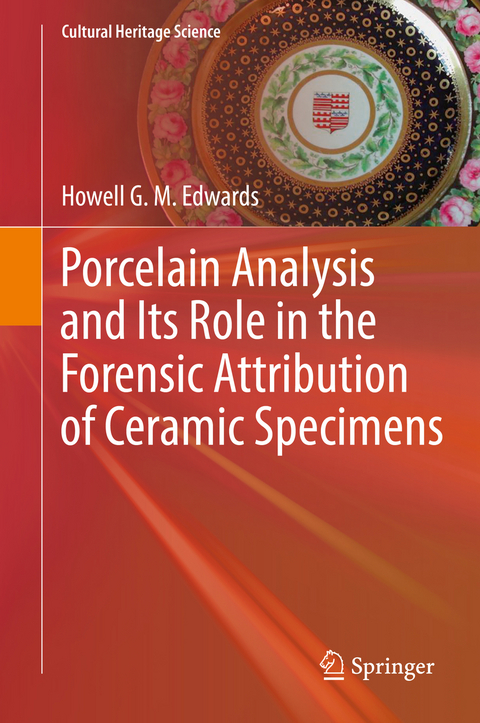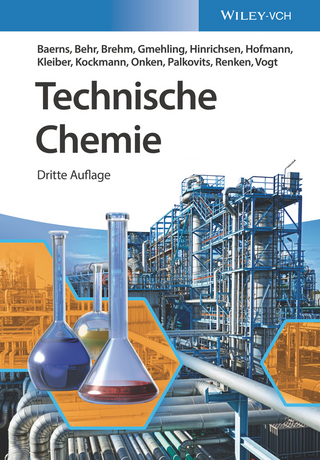
Porcelain Analysis and Its Role in the Forensic Attribution of Ceramic Specimens
Springer International Publishing (Verlag)
978-3-030-80951-5 (ISBN)
lt;b>Professor H.G.M. Edwards M.A., B.Sc., D.Phil., C.Chem., F.R.S.C. Emeritus Professor of Molecular Spectroscopy, Director of the Centre for Astrobiology and Extremophiles Research , Faculty of Life Sciences , University of Bradford, Bradford BD7 1DP, UK. Honorary Scientific Adviser to The De Brecy Trust for the scientific evaluation and pigment composition of Renaissance and later period paintings.
Howell Edwards studied Chemistry at Jesus College, University of Oxford. Following a Research Fellowship at Jesus College at the University of Cambridge, he took a lectureship in Structural and Inorganic Chemistry at the University of Bradford where he subsequently became Professor of Molecular Spectroscopy and Head of the Chemical and Forensic Sciences Division. In 2003, he received the Sir Harold Thompson Award from Elsevier Science for his international contributions to vibrational spectroscopy. He is the recipient of the Emanuel Boricky Medal for 2008/2009 from Charles University, Prague, for distinguished international contributions to geochemistry and mineralogical analysis. He was awarded the Charles Mann Award from the US Federation of Analytical Chemical Spectroscopic Societies in 2011 for his distinguished international work on the applications of Raman spectroscopy.
Professor Edwards has wide-ranging interests in the applications of Raman spectroscopy to the characterisation of materials particularly in forensic, art historical, astrobiological and archaeological contexts. He is a guest editor and contributing author of the Philosophical Transactions of the Royal Society, the oldest scientific journal in the world. He has been a forerunner in the Raman spectroscopic identification of chemicals produced in biodegradation processes for prehistoric and contemporary systems in an archaeological context - he first investigated the Raman spectra of Dirina lichen colonization of toxic metal substrates on Italian Renaissance wall-paintings in 1991 and has extensively studied the pigments and associated materials involved in paintings from prehistoric cave art to the 20th Century. He is science lead on the European Space agency/Roscosmos ExoMars Raman Laser spectrometer instrument in the Pasteur suite of a planetary rover which will interrogate the Martina surface and subsurface to search for biosignatures and signs of extant and extinct life, scheduled to launch in 2020, with particular responsibility for the interpretation of Raman spectroscopic biosignatures from biogeological niche environments on Mars. He is also UK representative on the ESA/Roscosmos Landing Site Selection Group dedicated to determine where the spacecraft will land on Mars for the deployment of the rover vehicle.
Chapter 1: Introduction - Setting the Scene: Analytical Data and Connoisseurship for Attribution in Art.- Chapter 2 . Chinese Porcelains and Their Early European Competitors.- Chapter 3. Establishing the Historical Baseline Chronology for European Porcelains.- Chapter 4. Types of Porcelain and Their Elemental Oxide Compositions.- Chapter 5 . Analytical Science and Case Studies.- Chapter 6 . Case Studies I : Analytical Data Which Have Materially Contributed to the Attribution of Porcelain Specimens.- Chapter 7 .Case Studies II : Analytical Data Which Have Revealed That Significant Revision is Required to Historical Knowledge of Porcelain Manufactories ( Part A).- Chapter 8 . Case Studies III : Analytical Data Which Have Revealed That a Significant Revision is Required to Historical Knowledge of Porcelain Manufactories ( Part B ).- Chapter 9 . Case Studies IV : Challenges for Analytical Science.- Chapter 10. Assessment of the Role of Chemical Analysis inthe Holistic Attribution of Porcelains to Factory Sources, Their Characterisation and the Evaluation of their Chronology.- Appendix I: Lady Charlotte Schreiber ( 1812-1895).- Appendix II : The Bearded Tulip : Who Was "de Junic" and Can Analysis Unravel the Mystery Surrounding this Artist?.- Appendix III : Retailers of Porcelain - A Source of Uncertainty for Analytical Attribution.- Appendix IV : The Importance of Establishing the Correct Chronology for Factory Operations in a Holistic Forensic Analytical Approach. Example : The Swansea and Nantgarw Manufactories,1814-1820.- Appendix V : Angela Georgina Burdett-Coutts, 1st Baroness.- Appendix VI : American Porcelain Manufactories.- Appendix VII :Curiosities in Ceramic Compositions Exposed by Chemical Analysis.- Appendix VIII :Knowledge Transfer in the Age of Enlightenment.- Appendix IX : Ancient Pigments Nomenclature Confusion : An Analytical Challenge.- Selected Bibliography.- Glossary.- Index.
| Erscheinungsdatum | 11.11.2021 |
|---|---|
| Reihe/Serie | Cultural Heritage Science |
| Zusatzinfo | XXIII, 571 p. 111 illus., 88 illus. in color. |
| Verlagsort | Cham |
| Sprache | englisch |
| Maße | 155 x 235 mm |
| Gewicht | 1113 g |
| Themenwelt | Naturwissenschaften ► Chemie ► Technische Chemie |
| Technik ► Maschinenbau | |
| Schlagworte | analytical techniques • Chemical Analysis • enamel decoration • fakes and forgeries • forensic holistic interpretation • glaze composition • historical documentation • Pigments • Porcelain and Ceramics • porcelain body composition |
| ISBN-10 | 3-030-80951-X / 303080951X |
| ISBN-13 | 978-3-030-80951-5 / 9783030809515 |
| Zustand | Neuware |
| Informationen gemäß Produktsicherheitsverordnung (GPSR) | |
| Haben Sie eine Frage zum Produkt? |
aus dem Bereich


